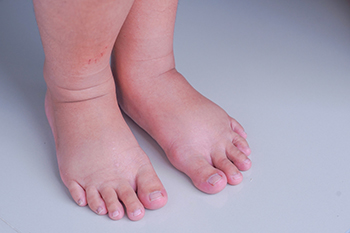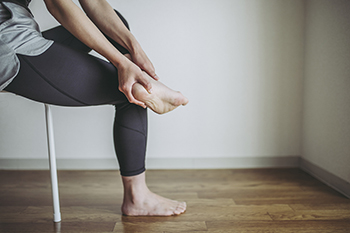
Morton's neuroma, a condition that often goes undetected, can cause considerable discomfort and disrupt daily life. This condition involves a thickening of the tissue around a nerve that runs between the third and fourth toes, typically causing a sharp, burning pain in the ball of the foot. The causes of Morton's neuroma are multifaceted, often arising from repeated stress on the feet, and ill-fitting footwear that squeezes the toes. Additionally, reasons why Morton’s neuroma may develop can include having certain foot deformities that lead to pressure on the nerves. High heels and activities that involve repetitive forefoot impact can exacerbate the condition. Recognizing the factors that contribute to Morton's neuroma is the first step in seeking relief and adopting preventive measures to ensure continued foot health. If you have pain in this part of your foot, it is suggested that you confer with a podiatrist who can accurately diagnose and treat Morton’s neuroma.
Morton’s neuroma is a very uncomfortable condition to live with. If you think you have Morton’s neuroma, contact one of our podiatrists of Advanced Foot & Ankle Medical Center . Our doctors will attend to all of your foot care needs and answer any of your related questions.
Morton’s Neuroma
Morton's neuroma is a painful foot condition that commonly affects the areas between the second and third or third and fourth toe, although other areas of the foot are also susceptible. Morton’s neuroma is caused by an inflamed nerve in the foot that is being squeezed and aggravated by surrounding bones.
What Increases the Chances of Having Morton’s Neuroma?
- Ill-fitting high heels or shoes that add pressure to the toe or foot
- Jogging, running or any sport that involves constant impact to the foot
- Flat feet, bunions, and any other foot deformities
Morton’s neuroma is a very treatable condition. Orthotics and shoe inserts can often be used to alleviate the pain on the forefront of the feet. In more severe cases, corticosteroids can also be prescribed. In order to figure out the best treatment for your neuroma, it’s recommended to seek the care of a podiatrist who can diagnose your condition and provide different treatment options.
If you have any questions, please feel free to contact our office located in Thousand Oaks, CA . We offer the newest diagnostic and treatment technologies for all your foot care needs.









